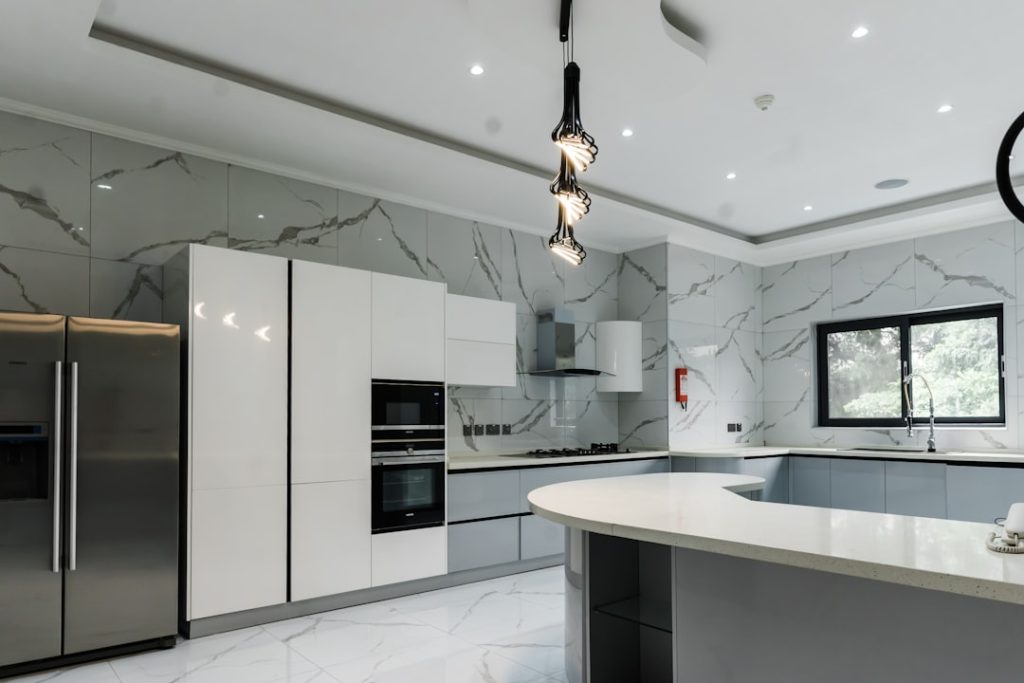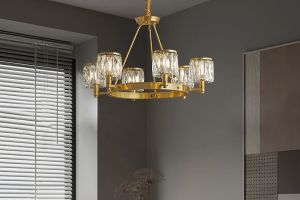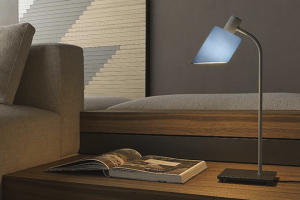Pendant lighting has emerged as a versatile and stylish choice for illuminating various spaces within a home. These fixtures hang from the ceiling, often suspended by a cord, chain, or rod, and can serve both functional and aesthetic purposes. The design of pendant lights can range from minimalist to ornate, making them suitable for diverse interior styles.
For instance, a sleek, modern pendant with a metallic finish can enhance a contemporary kitchen, while a vintage-inspired glass pendant might add character to a rustic dining area. The placement of pendant lights is crucial for achieving the desired ambiance. They are commonly used over kitchen islands, dining tables, or entryways, where they can create focal points and provide task lighting.
When selecting pendant lighting, it is essential to consider the height at which they will hang. A general rule of thumb is to position them approximately 30 to 36 inches above a surface to ensure adequate illumination without obstructing views. Additionally, the size and scale of the pendant should be proportionate to the space; larger pendants can make a bold statement in expansive areas, while smaller ones can be grouped for a more intricate look.
Wall Sconces
Wall sconces are an elegant solution for adding layers of light Housetonlighting to a room while also serving as decorative elements. These fixtures are affixed to walls and can provide both ambient and accent lighting. Their versatility allows them to be used in various settings, from hallways and living rooms to bedrooms and bathrooms.
The design options for wall sconces are vast, ranging from traditional candle-style sconces to modern LED fixtures that offer sleek lines and innovative designs. One of the significant advantages of wall sconces is their ability to enhance the architectural features of a space. For example, placing sconces on either side of a fireplace can draw attention to the hearth while providing soft illumination for cozy evenings.
In bedrooms, sconces can serve as bedside lighting alternatives to table lamps, freeing up valuable nightstand space. Furthermore, adjustable sconces allow for directional lighting, making them ideal for reading nooks or artwork display areas. The choice of materials and finishes—such as brass, chrome, or matte black—can also influence the overall aesthetic, allowing homeowners to tailor their lighting choices to their personal style.
Chandelier
Chandeliers have long been synonymous with elegance and grandeur, often serving as statement pieces in dining rooms, entryways, and ballrooms. These elaborate fixtures typically feature multiple arms or branches that hold light bulbs or candles, creating a stunning visual impact. The history of chandeliers dates back to medieval times when they were used in castles and churches; today, they continue to evoke a sense of luxury and sophistication in modern interiors.
When selecting a chandelier, it is essential to consider the scale of the space. A large chandelier can serve as a dramatic focal point in a grand foyer or dining room, while smaller chandeliers can add charm to intimate spaces like bedrooms or home offices. The style of the chandelier should also complement the overall decor; for instance, a crystal chandelier may enhance a traditional setting, while a geometric metal design could suit a contemporary aesthetic.
Additionally, chandeliers can be equipped with dimmable features, allowing homeowners to adjust the brightness according to the occasion—whether it’s an elegant dinner party or a casual family gathering.
Track Lighting
Track lighting is an innovative solution that offers flexibility and versatility in illuminating various areas of a home. This system consists of multiple light fixtures mounted on a track that can be adjusted and repositioned as needed. Track lighting is particularly popular in spaces where adjustable lighting is essential, such as kitchens, galleries, and workspaces.
The ability to direct light precisely where it is needed makes track lighting an excellent choice for highlighting artwork or architectural features. One of the key benefits of track lighting is its adaptability. Homeowners can easily change the configuration of the fixtures on the track to suit their evolving needs or preferences.
For instance, if a homeowner decides to rearrange furniture or artwork, they can simply reposition the lights without needing extensive rewiring or installation work. Additionally, track lighting comes in various styles and finishes, allowing it to blend seamlessly with different interior designs—from industrial chic to modern minimalism. The use of LED bulbs in track lighting systems also contributes to energy efficiency while providing bright illumination.
Recessed Lighting
Recessed lighting has gained popularity for its sleek and unobtrusive design that seamlessly integrates into ceilings. These fixtures are installed within the ceiling cavity, creating a clean look that does not detract from the overall decor of a room. Recessed lights are often used for general ambient lighting but can also serve specific purposes such as task lighting or accent lighting when strategically placed.
The versatility of recessed lighting allows it to be used in various applications throughout the home. In kitchens, recessed lights can provide even illumination across countertops while minimizing shadows during food preparation. In living rooms or home theaters, recessed lights can be used in conjunction with dimmers to create an inviting atmosphere for movie nights or gatherings.
Additionally, recessed lights can be equipped with adjustable trims that allow for directional lighting, making them ideal for highlighting artwork or architectural details. When planning recessed lighting layouts, it is crucial to consider spacing and placement to ensure optimal coverage without creating overly bright spots or dark corners.
Table Lamps
Table lamps are an essential component of interior lighting design, offering both functionality and style. These portable fixtures come in various shapes, sizes, and designs, making them suitable for nearly any room in the house. Whether placed on nightstands, side tables, or desks, table lamps provide localized illumination that enhances comfort and usability in living spaces.
The choice of table lamp can significantly influence the ambiance of a room. For instance, a lamp with a warm-toned shade can create a cozy atmosphere in a bedroom or living room, while a sleek modern lamp with a metallic finish may add sophistication to an office space. Additionally, table lamps often serve as decorative accents that complement other elements within the room—such as color schemes and furniture styles.
When selecting table lamps, it is essential to consider not only their aesthetic appeal but also their functionality; adjustable lamps with dimming capabilities can provide versatility for different activities like reading or entertaining.
Floor Lamps
Floor lamps are another versatile lighting option that can enhance both functionality and aesthetics in various spaces. These freestanding fixtures come in numerous styles—from arc floor lamps that provide overhead illumination to tripod designs that add a touch of modern flair. Floor lamps are particularly useful in areas where additional light is needed without the constraints of wall-mounted fixtures or table space.
One of the significant advantages of floor lamps is their mobility; they can be easily moved from one location to another based on changing needs or preferences. For example, a floor lamp placed next to a reading chair can create an inviting nook for book lovers, while another lamp positioned near a sofa can provide ambient light for social gatherings. The height and design of floor lamps also allow them to serve as decorative elements that contribute to the overall decor theme—whether it’s mid-century modern or bohemian chic.
Furthermore, many floor lamps now incorporate energy-efficient LED bulbs that not only reduce electricity consumption but also offer longer lifespans compared to traditional incandescent bulbs.
Candlelight
Candlelight has an unparalleled ability to create warmth and intimacy within any setting. The soft flicker of candle flames casts gentle shadows and produces a soothing glow that enhances the atmosphere of both casual gatherings and formal occasions alike. Candles come in various forms—pillar candles, votives, tea lights—and can be used individually or grouped together for added effect.
Incorporating candlelight into home decor allows for endless creative possibilities. For instance, placing candles on dining tables during meals can elevate the dining experience by providing soft illumination that encourages conversation and relaxation. Similarly, using candles in bathrooms creates a spa-like ambiance perfect for unwinding after a long day.
Beyond their aesthetic appeal, candles also offer olfactory benefits when infused with fragrances; scented candles can evoke memories and emotions through their aromas while contributing to an inviting atmosphere. The versatility of candlelight extends beyond traditional uses; it can also be integrated into decorative arrangements such as centerpieces or mantel displays. Using candle holders made from materials like glass or metal adds an extra layer of sophistication while ensuring safety during use.
Whether lit during special occasions or simply enjoyed during quiet evenings at home, candlelight remains an enduring symbol of comfort and tranquility in interior design.






More Stories
Rustic Industrial Iron Wall Lamp: Perfect for Kitchen
Stylish Brass Chandelier Elevates Bathroom Decor
Enhance Your Dining Space with an Acrylic Table Lamp